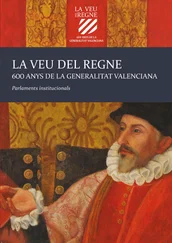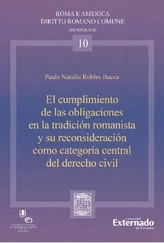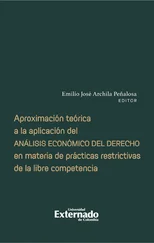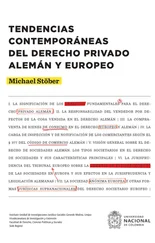Today, these codes exist in various forms, yet two basic variants predominate. On the one hand, the heavy public criticism, disseminated by the media globally, and the aggressive actions of protest movements and civil society non-governmental organizations (NGOs) force numerous transnational corporations to develop corporate codes “voluntarily”. They commit themselves to standards in the issue areas labour conditions, product quality, environmental policies, consumer protection and human rights and promise their implementation (short and imprecise: “private” codes). On the other hand, the state world establishes — through agreements under international law or through the norms of international organizations — codes of conduct for transnational corporations (again, short and imprecise: “public” codes).
How are the subjects of these private and public codes defined? It would be a misunderstanding to determine them as single formal organizations—TNCs, on the one side, and international organizations, on the other. Rather, a network revolution has taken place in both legal spaces. Extensive networks have developed between different organizations, which then facilitate the understanding of the entire configuration as the relationship between two different, mutually closed networks. On the one hand, private codes have already transcended the confines of individual companies. They have extended their validity to corporate groups and conglomerates that transcend national boundaries and encompass in some cases thousands of individual companies. Under pressure from the public and civil society organizations, their scope was even extended beyond the boundaries of corporate groups. With contractual regulations, powerful corporate groups are able to bind their suppliers and their distribution chains to their corporate codes and use the contractual mechanism also to introduce effective monitoring and sanctioning systems. 23On the other hand, interlinks in the codes of the state world can be found. Here, manifold connections between the corporate codes of the ILO, the OECD, the United Nations Organizations, and the European Union have emerged. 24Insofar the parlance of codes of corporations is misleading. This would suggest a world in which the markets are populated by isolated companies. Today’s universe of interconnected enterprises is rightly called a network society. And the adequate expression would be codes of corporate networks.
In many cases, “public” codes for corporate networks remain mere recommendations with no effects whatsoever. And the self-commitments in “private” codes are often only strategic attempts to pre-empt state regulation by the non-binding declaration of intent, or they are mere public relations strategies without involving any effective change of behaviour. 25But there are some empirical studies which deserve particular attention. They demonstrate that in some cases the corporate codes brought about real change; hence that they improved labour conditions, increased environmental protection and pushed through human rights standards. 26It is particularly noteworthy that these studies do not only document success stories; they also specify the social and legal conditions that have to be given, if the codes are meant to be successful. 27Permanent NGOs monitoring or binding contracts with civil societal certification bodies are likely to be among the most important conditions for success.
What is special about the interplay between private and the public codes for corporate networks? My thesis is: As a reaction to recent crises not only tendencies of a private juridification but also of a constitutionalization beyond the state take place. While the debate on legal pluralism, private ordering, and transnational governance concentrate on the question whether new forms of law without the state are emerging in the globalization process, I would like to focus on the question whether in reaction to the crisis stateless societal processe are also developing genuinely constitutional norms. As I have extensively argued elsewhere, this point is based on a concept of constitution that is not limited to the nation state and implies that also non-state societal orders develop autonomous constitutions under particular historical circumstances. 28
I try to support this thesis with the following arguments, meant to highlight that the codes of corporate networks feature functions, structures and institutions of genuine constitutions, network constitutions:
1. To the extent that private and public codes juridify fundamental principles of a social order and establish rules for its self-restraint at the same time, they fulfil central constitutional functions for corporate networks.
2. As one among several reactions to the present crisis, a shift within these network constitutions takes place, a shift from constitutive to limitative rules.
3. With their characteristics of double reflexivity and binary meta-coding, both network codes develop genuine constitutional structures.
4. As constitutional institutions, the two codes do not form a hierarchy of public and private constitutional rules, but an ultracyclical linkage of qualitatively different networks of constitutional norms.
Thesis # 1: Constitutional Functions: Constitutive and Limitative Rules
Codes for corporate networks take part in two opposing waves of constitutionalization of the world markets. Advancing Karl Polanyi’s ideas about the transformation of modernity, one can even argue that transnational constitutionalism is part of a “double movement”. 29Also in the trajectory of corporate constitutional law, the expansion of economisation is accompanied by counter movements, which reconstruct the “protective covering of cultural institutions” .
The first constitutional movement is identified by neo-materialist critics of a “new constitutionalism” as well as by ordoliberal advocates of a world economic constitution, naturally with diametrically opposing evaluations. 30The Washington consensus of the last thirty years has pushed ahead politically with this first surge of constitutionalization of the world markets. It did not only trigger political regulation but fundamental principles of economic constitutionalism. They aimed at providing worldwide operating corporations with unlimited latitude for action, which encompassed ending governments holding shares in corporations, combating trade protectionism and freeing commercial enterprises from political regulations. In this vein, the International Monetary Fund and the World Bank have developed regime constitutions, whose guiding principle is to open up national capital markets. An integral part of these constitutionalization tendencies is the corporate governance of multinational corporate networks, whose principles encompass a high degree of corporate autonomy, the capital market-orientation of company law, and the establishing of shareholder value. 31
This wave of “neo-liberal” constitutionalization is clearly characterized by its constitutive function, i.e. its focus on providing transnational corporations with a high degree of autonomy. It is fixated on the problem that the worldwide extension of corporate activities is hampered by the segmentary differentiation of the world into nation states. Constitutive rules of this kind serve for releasing the dynamic of commercial enterprises at the global level.
Thesis # 2: Externally Enforced Constitutional Self-Restraint
In the long run, however, it is not sustainable that a corporate constitutionalism restricts itself to its constitutive function in such an one-sidedly “neo-liberal” fashion. It is only a matter of time before the systemic energies released trigger disastrous consequences — alongside their indubitably productive effects. Now a fundamental readjustment of constitutional politics will be required to deal with the outburst of social conflicts. Globalized markets and corporations put — without being significantly hampered by nation state counter programs — a strain on society and the environment through the “negative effects of their own differentiation, specialization and high-performance orientation”. This is the moment when Polanyi’s “dual movement” makes its presence felt, which, as Streeck argues, identifies
Читать дальше











